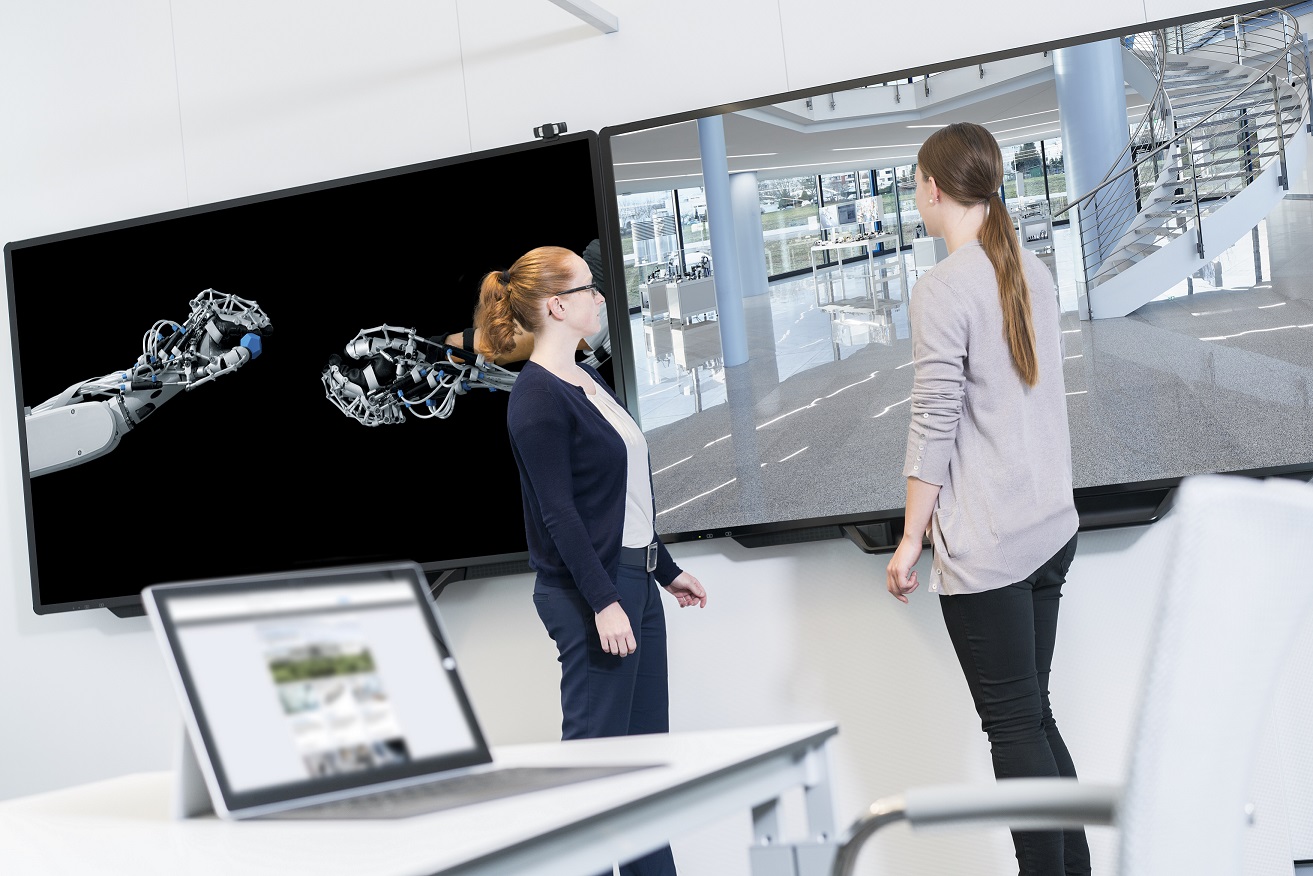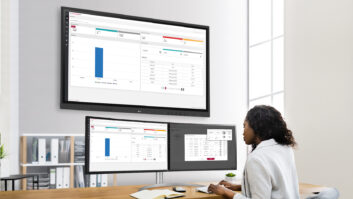
Everyone in businesses and organisations around the world seems to be talking about digital transformation and the digital workplace. To begin this special report, Ian McMurray finds out what’s going on in the office.
Happy birthday, ENIAC. This year, on 29 July, ENIAC would have been 70 – had the world’s first significant digital computer lived until now. Instead, it was switched off, somewhat unceremoniously, on 2 October 1955, by which time it has been claimed that it had done more arithmetic than the entire human race to that date.
Insofar as ENIAC was the first significant digital computer, it can be said to have been the progenitor of the digital technologies we take for granted today. Those have transformed our home and personal lives – and, increasingly, they’re transforming both how and where we work.
That transformation has a name: the ‘digital workplace’. But: what are its key characteristics?
Mobile lifestyles
“Millennials who, by 2020, will make up half the global workforce, are a major driver in the creation of the digital workplace,” notes Michael Helmbrecht, chief product and operations officer at Lifesize. “They’ve got a strong affinity for digitisation, mobility and flexibility. With this, we’re seeing the digital workplace becoming more commonplace – a standardisation of mobile work styles, user-driven BYOD tools and persistent collaboration, in spite of different time zones and locations.”
Helmbrecht talks about mobile lifestyles, and certainly mobility is a key element in the digital workplace. “To me, the digital workplace is a place where everyday devices are more connected and where the physical and virtual environments are merging,” believes Alex Couzins, marketing manager at AVMI, “allowing employees to communicate and collaborate across distributed environments and geographies.”
“Broadly speaking, it’s about giving the workforce the tools they need when and where they need them,” says Michele Durban, marketing director at Starleaf. “It also means that there needs to be a way to meet up with colleagues on a virtual basis, over video on any device they happen to have to hand.”
“Work is no longer a place, it’s an activity,” adds Neil Marshall, client solutions director at Dell EMEA. “A digital workplace is a digital experience centred on an agile, highly mobile work culture that gives employees the freedom to get more done from anywhere.”
Three dimensions
“I think there are three dimensions to the digital workplace,” explains Lieven Bertier, global marketing manager for collaboration and meeting experience base at Barco. “It features a lot of open space and flex desking, together with huddle spaces. It’s a new way of working involving BYOD, cloud and maybe even virtual personal assistants. And it leverages the Internet of Things in order to exploit information.”
We need digital technologies to support human interaction rather than replace it
Birgit Jackson, Sharp Europe
What’s interesting is that almost no-one mentions ‘collaboration’ in their definition of the digital workplace. “Collaboration is such a clichéd word,” laughs Birgit Jackson (formerly Sommerer), commercial director, visual solutions at Sharp Europe – and that may be because, today, that’s a concept that’s already so deeply ingrained that it’s a given; talking about it seems almost superfluous. What these digital technologies do, though, is to deliver the mobility, the location-independence, the easy access to information and the tools that enable that information to be readily shared in real time – and those deliver a highly collaborative working experience.
So what’s happened that has made ‘digital workplace’ the words on everyone’s lips?
“The digital workplace is a concept that’s been on CIOs’ radar for a couple of years now,” says Anne Marie Ginn, senior category manager at Logitech Video Collaboration, “but advances in technology, as well as workplace demographics, have allowed many companies to make this digital transformation a reality.”
Validated
Jackson too sees changing workplace demographics as one of three drivers for the change. “If organisations don’t keep up with the technology preferences of their people, they suffer – or people just use their own devices instead, and the business loses control of its data,” she believes, “so there’s pressure to speed up digital transformation. Second: when everyone is working on their own devices, using ‘eyes-down’ technology, and communicating digitally, collaboration can suffer. We need digital technologies to support human interaction rather than replace it.
“The third thing we’re seeing is that big IT providers have entered the interactive display space and have validated it,” she goes on. “Digital tools like interactive displays are now seen as mainstream business applications and something to include in your IT spend alongside laptops and individual screens.”
Couzins too sees the so-called ‘millennial effect’. “The digital workplace seems to be driven at both ends of the organisation,” he adds. “At the top, CTOs and CIOs are looking for ways to accelerate business growth and drive efficiencies using the latest technologies and digital infrastructure. ‘Digital transformation’ seems to be the buzz term used to describe this movement at an enterprise level. Likewise, with the rise of IoT and smart devices in the home, it seems to me that there is also a bottom-up demand – especially amongst younger, more tech-savvy workers who are coming into the organisation with greater expectations around technology in the workplace.”
For Drew Dooler, managing director and founder, UXG – formerly Unicam Digital Group – it’s all about the bigger picture. “Digital workspace to me means innovation,” he says. “It’s the next logical step in how businesses will and should aspire to operate and grow. It allows for businesses to develop a global footprint, opening themselves to new talent and territories that only a few years ago would’ve meant they had to invest in overseas offices and infrastructure that would have taken considerable funding in order to be a successful venture.”
www.avmi.com
www.barco.com
www.dell.eu
www.lifesize.com
www.logitech.com
www.sharp.eu
www.starleaf.com
www.uxglobal.co.uk







